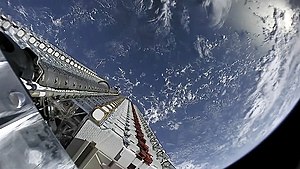SpaceX Starlix Satellite internet coverage
This article is about the SpaceX satellite internet service. For other uses,
see Starlink.
Starlink is a satellite internet
constellation operated by SpaceX,Starlink is a satellite internet
constellation operated by SpaceX, providing satellite Internet access coverage to 40 countries.
It also aims for global coverage with satellite personal communications service after 2023.As of September 2022, Starlink consists of over 3,000 mass-produced small satellites in low Earth orbit, which communicate with designated ground transceivers. Starlink provides internet access to over 500,000 subscribers as of June 2022.
On 15 October 2019, the United States Federal Communications
Astronomers have raised concerns about the constellations' effect on ground-based astronomy and how the satellites will add to an already congested orbital environment. Astronomers have raised concerns about the constellations' effect on ground-based astronomy and how the satellites will add to an already congested orbital environment. SpaceX has attempted to mitigate astronomy concerns by implementing several upgrades to Starlink satellites aimed at reducing their brightness during operation.
The satellites are equipped with krypton-fueled Hall thrusters w, allowingthem to de-orbit at the end of their life. Additionally, the satellites are designed to autonomously avoid collisions based on uplinked tracking data.


.jpg)



Nice dear
ReplyDeletethanks
Delete